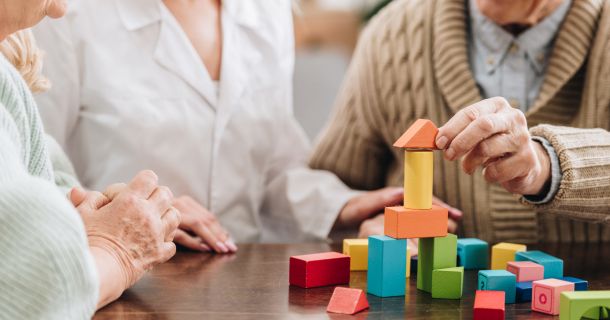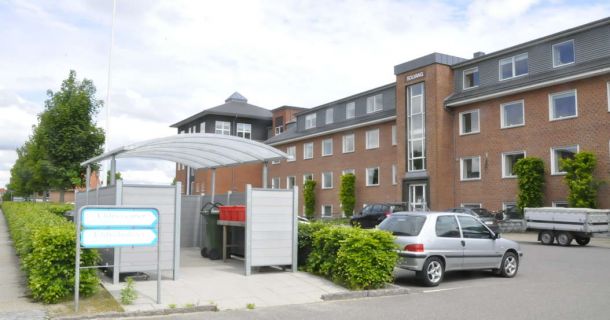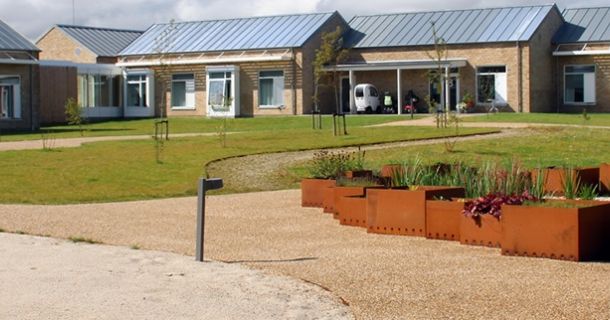Zorggroep Elde Maasduinen: ‘It saves time, but above all provides better care’
At Zorggroep Elde Maasduinen (ZGEM), 2000 employees and 1400 volunteers are committed day and night to caring for 3,500 elderly residents in Central and Northeast Brabant in the Netherlands. At their location ‘De Vlaswiek’, a small-scale nursing home in Liempde, ZGEM recently started using ABENA Nova.
Sharing ABENA Nova experience
In this article, José van den Langenberg and Ine van Gestel from Caregroup Elde Maasduinen in the Netherlands share their experiences about the use of ABENA Nova. How did they approach this pilot and how do they deal with implementing digital continence care?
How do residents and employees like ABENA Nova? Does the digital incontinence product deliver what they expected from it? And how do you implement health care innovation in practice? José van den Langenberg (caregiver) and Ine van Gestel (caregiver), who acted as ‘ambassadors’ during the ABENA Nova pilot project, share their experiences.
What exactly does your role as an ambassador entail?
José: “First and foremost, keep the team enthusiastic. But that’s not that difficult here. Everyone wanted to cooperate and most employees did not really need to be convinced.”
Ine: “In the beginning, we did sometimes have to explain where the added value was. Then we said: just try it for a few weeks. And gradually, everyone have become enthusiastic.”
When did you decide to start working with ABENA Nova? And why?
José: “We were actually already working on it two years ago. We looked for ways to best manage continence care in the ward. For people with dementia it is a stimulus every time you take them to the toilet, especially if it turns out to be for nothing. We do not want to burden people unnecessarily. We are concerned with the well-being of our residents. ”
Ine: “We had not yet heard of ABENA Nova. We just started searching the internet and then we came across it. That’s how the ball started rolling. Our Innovation department then took it further and they came back to us last summer with the idea of conducting a pilot with ABENA Nova.”
You don’t want to stimulate people who are restless by taking them to the toilet unnecessarily. And for bedridden residents, unnecessary changes can lead to defensive behavior through shame, sadness or anger.”
How do you approach such a pilot?
José: “There are 32 residents living at this location, 16 of which are in our own department, the Vlaspit. At the start of the pilot, we had more residents here who qualified for digital incontinence aids than in the other department, the Vlasblom. That is why we started in our department. The first step was to do a baseline measurement, together with ABENA.”
What did you look at during the baseline measurement?
Ine: “How often is the resident changed? How often does it happen unnecessarily? How often do you have to wake a resident up during the night? The baseline measurement also revealed which residents ABENA Nova would be suitable for – and who it would not be suitable for. For example, a resident cannot exhibit plucking behavior or have fecal incontinence. In the end, we ended up with a group of eight residents.”
Can you already say something about the benefits of ABENA Nova?
José: “There has already been an evaluation. The graphs show that fewer changes are needed per day. As a result, the consumption of incontinence products is also less. Previously, we had to change three extra beds in one day; this has become a lot less. All of this saves time. But above all ABENA Nova has done a lot of good for the residents’ well-being.”
“By adapting the changing time to the resident, you can really provide personalized care.”
Can you give concrete examples of how ABENA Nova has improved the well-being of the residents?
Ine: “We have a resident who really enjoys participating in activities. Previously, we often had to interrupt activities because we did not know whether she might have an accident. At half past ten, make sure to go to the toilet. Now we can see on the Nova app whether it can wait another hour and she can stay with the activities.”
José: “There are also two residents who only wear incontinence products at night. They often had a wet bed in the morning. Or we had to wake them up at night for a change, unnecessary or not. If they urinate in their sleep now, you will immediately see what is the best action. Orange? Then it is not too bad and you can let them sleep. Red? Then we go straight to it. If that is at 3 AM, you still need to wake them up, but at least they don’t have a wet bed. And the night shift immediately does the washing, which means there is time in the morning for extra attention.”
Ine: “You don’t want to stimulate people who are restless by taking them to the toilet unnecessarily. And for bedridden residents, unnecessary changing leads to defensive behavior through shame, sadness or anger. So yes, fewer unnecessary actions will result in more time. But above all: better care.”
Tell us a little more about the time savings. What do you do with the time you save? We regularly hear from health care professionals that you have to be careful that time does not slip between your fingers. What is your experience with that?
José (laughing): “We have no problem with that, you know. We spend the time we save on the well-being of the residents. Take an extra ten minutes in the morning to chat at the edge of someone’s bed. Go outside together for a moment. Or play a game, because you don’t have to change those three extra beds. No, that switch was made quickly here.”
“We spend the time we save on the well-being of the residents.”
Speaking of switching: Introducing ABENA Nova also requires a different way of working. How do you get that done? And do you have any tips for other health care organizations that are struggling with this?
José: “The changeover went very smoothly for us. That was not an issue, it just ran. But that is mainly due to the attitude of the team. Almost everyone was immediately enthusiastic.”
Ine: “If the enthusiasm is there, if the will is there, then you have come a long way. It’s only in the beginning it takes some to get used to. How do you put the sensor on the material, simple things like that. But within a week or two, everyone will have mastered that. Same with the app. In the beginning you still check every day if the phone is making contact, but not after two weeks. With us, the telephone is at a fixed location near the medicine cart. So you don’t have to walk around with an extra phone in your pocket. When you walk pass the cart, you look at it now and then: does anyone need a change?”
José: “In the beginning, we also left a notebook where colleagues could write down their questions every day. If we did not know the answers, we took them to the meeting with Jet, our contact person at ABENA. They were not really big questions, more practical things. That a patch came off, for example. Then we got a tip from Jet and the problem was solved. Or we could send an app if we had a question.”
Ine: “We also looked at the adjustment together. For example, for residents who suffered from skin irritation. We have adjusted the volume there to be able to change earlier. By adapting the changing time to the resident, you can really provide personalized care.”
“In the beginning, we left a notebook where colleagues could write down their questions. If we didn’t know the answers, we took these questions with us to the meeting with ABENA.”
So the pilot was successful. What’s next?
José: “Actually, we have quietly switched from the pilot to daily use. And now we have been asked to start it up in our other department as well.”
Ine: “Soon we will have a Zoom meeting with colleagues from the Innovation department to share our stories. And later on with BrabantZorg, a fellow organization. They would also like to know how we like it.”
ABENA Nova



